
Bromeliads
October, 2020
If you’re like me, feeling hounded by the mid-autumn trifecta of rain, wind and darkness, you’ve started to ponder bringing parts of the garden inside with you, not only to spare sensitive plants the indignity of looming wintry chill, but also to comfort the gardener through the restorative, life-affirming reassurance of having our tender green scions closer at hand.
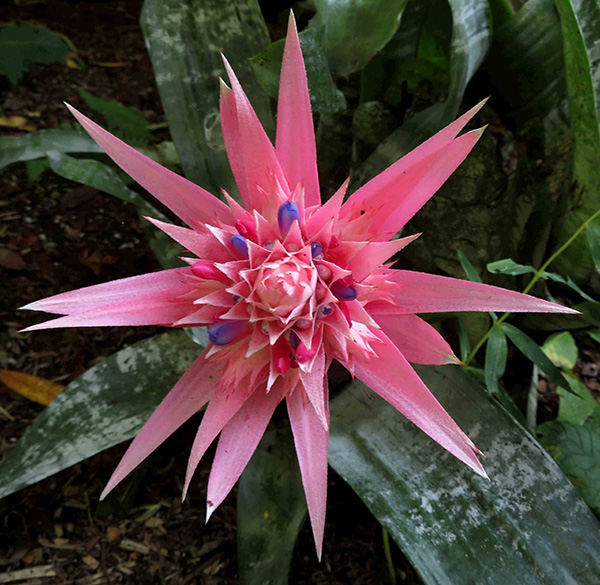
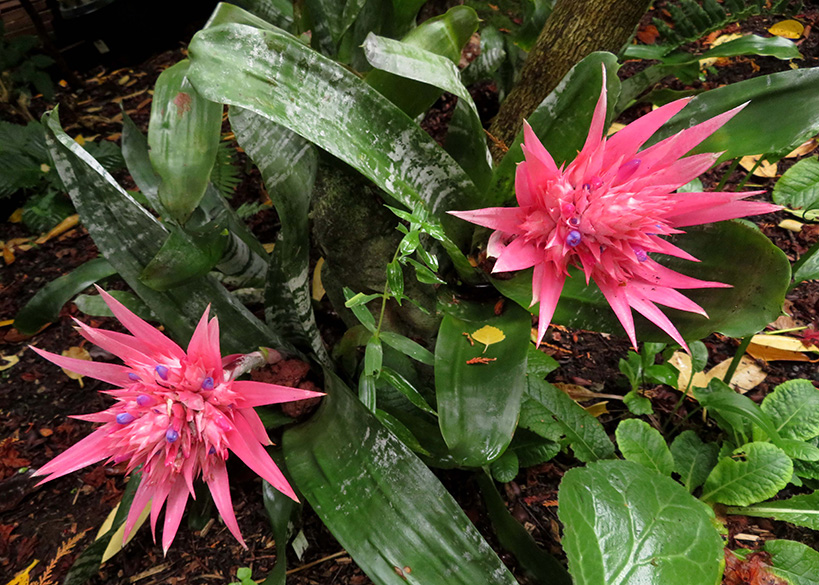
At the moment I’ve got my eyes on a couple of 18 year-old clumps of Aechmea fasciata, an urn-shaped, tough-as-nails, old-fashioned Brazilian bromeliad that occasionally rewards its keeper by thrusting up a durable, pyramid-shaped funhouse inflorescence of cotton-candy pink bracts followed by the emergence of little lavender-blue flowers from within its fractal folds. This year their generosity moves me to tears, gracing me with four bloom stalks at once! I feel unworthy, as I certainly haven’t pampered them. In April I scooped them off the greenhouse floor where they’d overwintered and unceremoniously plopped them on the bare ground in a shady spot along my front sidewalk. As an epiphyte needing no soil, Aechmea can rest anywhere out of direct sun, its only requirements being regular water and avoidance of frost.
Lately I find myself drawn to many irrepressible members of Bromeliaceae, a sprawling family endemic to the Western Hemisphere, from Virginia in the north to Patagonia in the south, comprising 75 genera and 3600 species. My first awareness of them came as a 10-year-old child: While visiting an uncle in Louisiana, I spotted shrouds of “Spanish moss” (Tillandsia usneoides) waving in the live oak trees. I couldn’t quite grasp that the fluffy shawl I made by draping an armload of the stuff around my neck was actually a living plant, so I headed straight to the public library when I got home to read up on it. When I learned it was in the pineapple (bromeliad) family, I was at first incredulous and then intrigued. Thus began my fascination with this stalwart family that never ceases to defy expectations of what plants can do.
Apropos pineapple, this Brazilian native was the first bromeliad to come to the attention of the outside world when the addle-brained Columbus stumbled upon it in the Caribbean. He called it “piña de Indias” or “pine cone of the Indies” and English followed suit by dubbing the fruit with the portmanteau word “pine-apple.” Most of the rest of the world called it by one of its Tupi (Brazilian) indigenous names, ananas. A couple of hundred years later, Linnaeus designated it as the type genus of Bromeliaceae, assigning it the Latin name Bromelia comosa (comosus = “tufted,” in reference to the foliage atop the fruit). He named it in honor of Olof Bromelius, a 17th century Swedish physician and botanist. You may recall that Linnaeus was quite the chauvinist and resisted incorporating indigenous names of non-European plants in his new binomial taxonomic scheme. Botanical taxonomists corrected his error about 100 years ago by reclassifying pineapple as Ananas comosus. To complete the circle back to Seattle today, I’ve nurtured a variegated form of this plant in a container for 18 years; it’s among the loveliest foliage plants I grow.
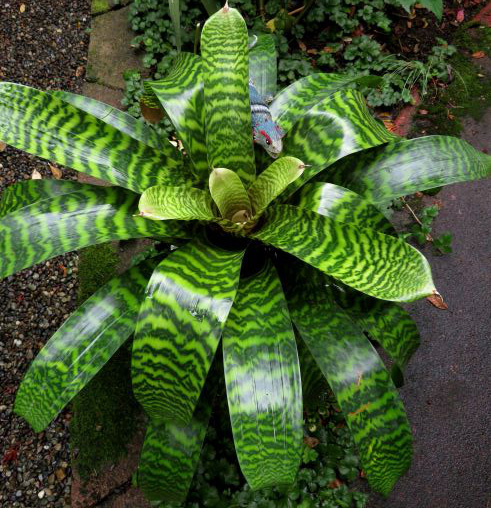
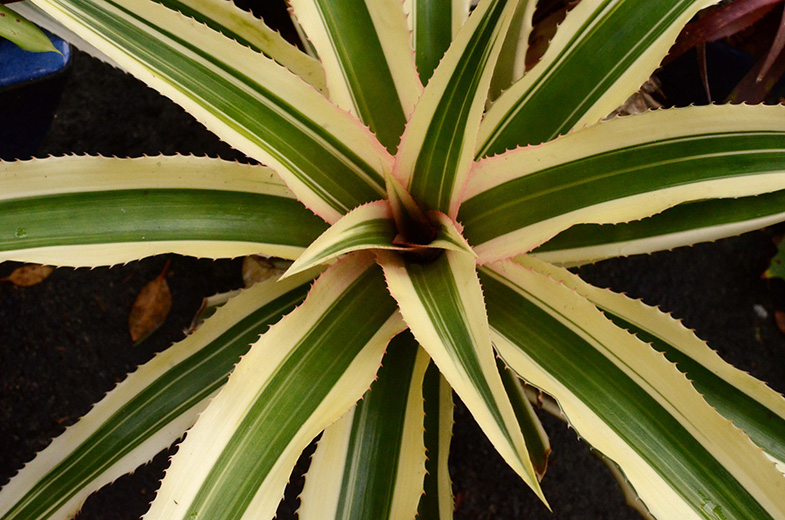
In addition to Aechmea and Ananas, other bromeliad genera from the humid tropics such as Guzmania, Neoregelia and Vriesia also make superb house plants that will happily adorn your garden in summer. Higher and drier parts of South America are home to several genera of beauteous bromeliads that can find year-round spots outside in these parts, although most of them need to be sheltered from winter rain, and many are heavily armed with spines that mean business. Chief among them are the perilously prickly Puyas (mostly from semiarid Andean regions) and their close cousins, the defiantly dauntless Dyckias (native to drier parts of Brazil, Paraguay and Argentina). Some are almost as hardy as their near relative, Fascicularia bicolor, that Richie recently featured in his Plant of the Week column.
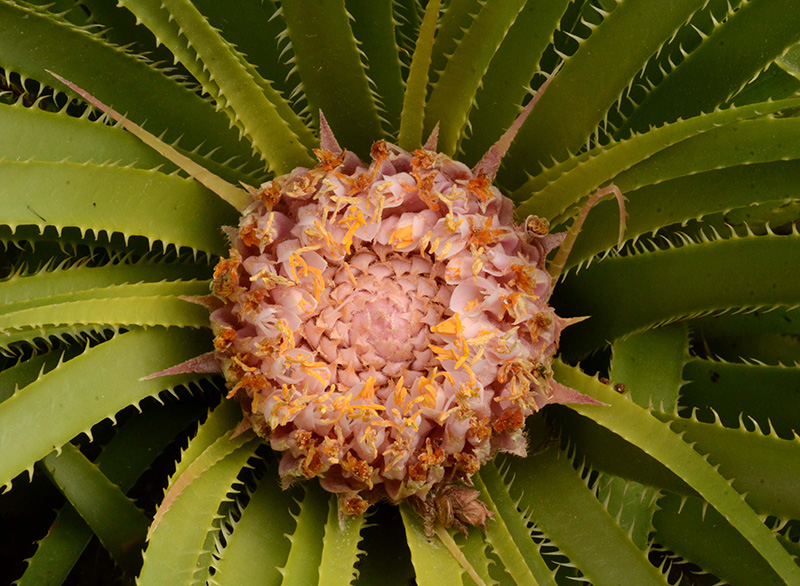
Its Chilean compatriot and near look-alike, Ochagavia carnea, is an easy one, too, with benign spines and compact stature; it flowers more freely and is also frost tolerant.
Yes, bromeliad collecting can be addictive, but consolation comes with awareness that these long-lived sentinels are diverse enough to accommodate every pocketbook, garden size and level of expertise.
Until next time,
Horticulturally yours,
Daniel
